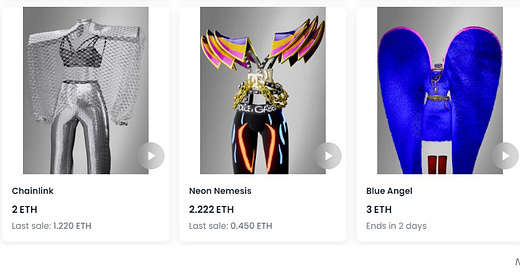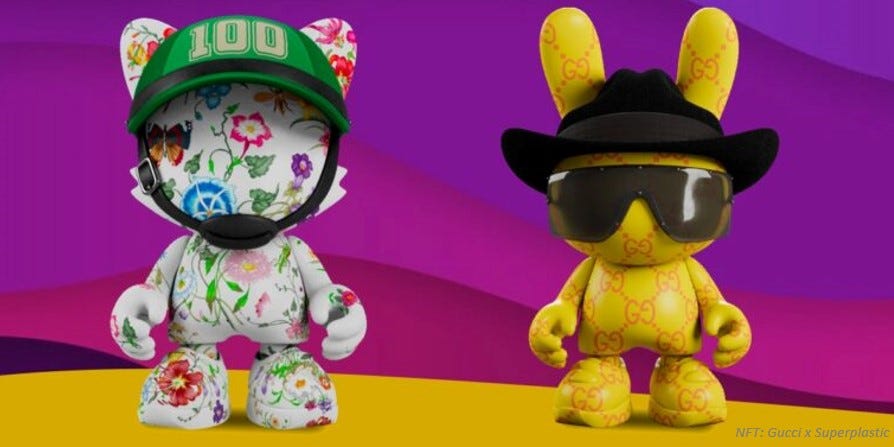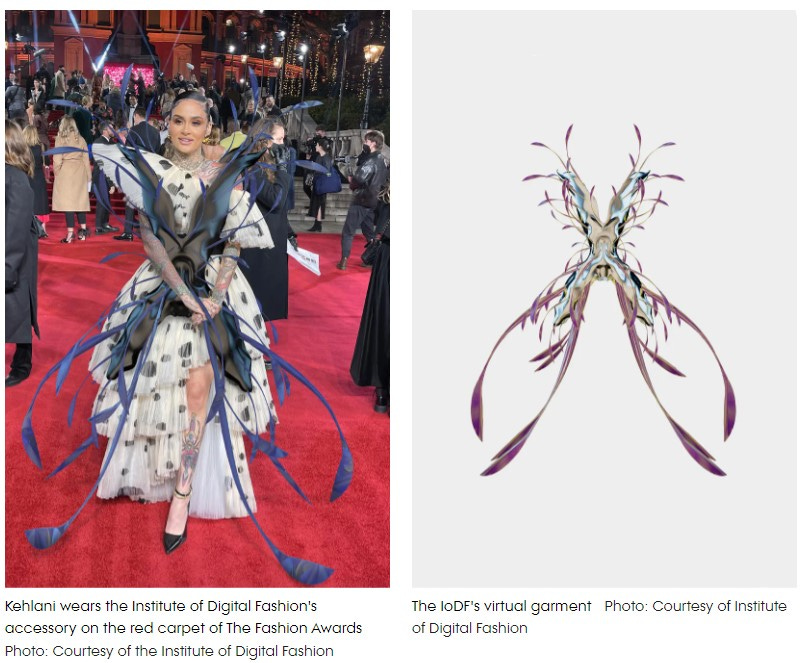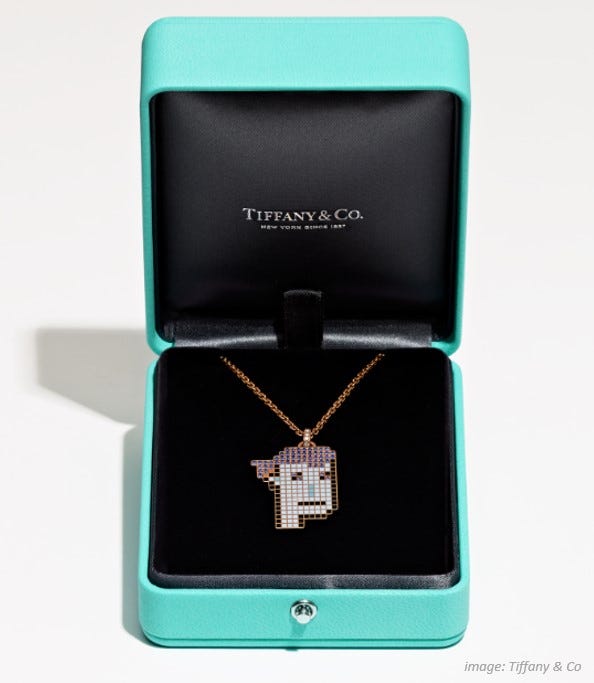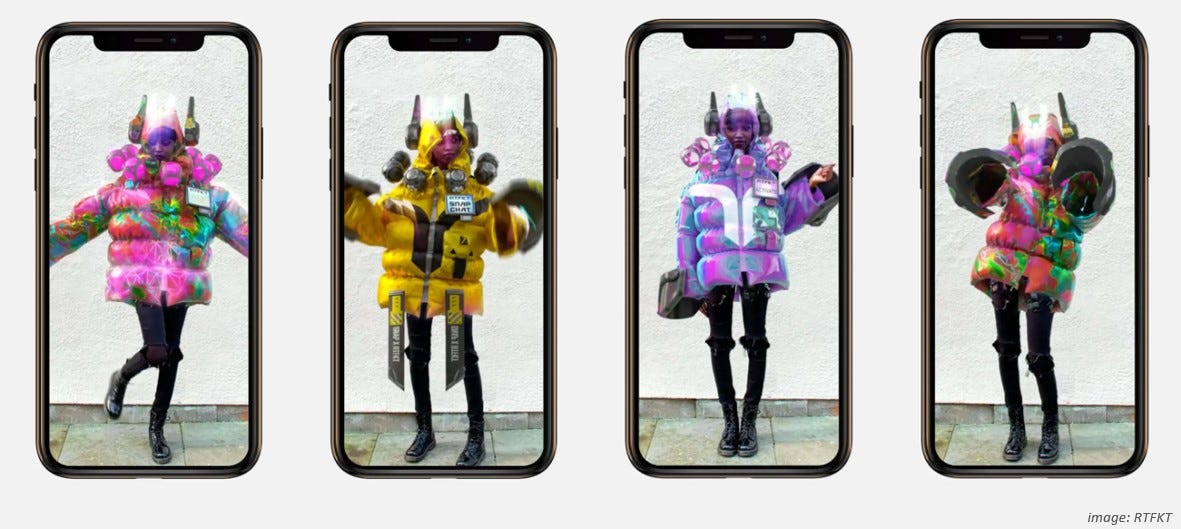Web3 Fashion: a quick introduction to the industry's future
Hello dear readers,
Having spent 10 years of my life working in fashion business, I have been closely following its ventures into the crypto space, first timid, but now multiplying at an astonishing pace. This is an fascinating process to watch, and today I would like to share with you my observations and tell you more about the use of blockchain and web3 tools in fashion.
👜 👗 👟
Fashion is one of the industries that stands to benefit greatly from the blockchain and web3, and in so many different ways! From product authentication to the new types of product - phygitals, AR and VR garments - passing by the new retail and customer engagement practices, crypto tools are being increasingly used on various stages of a fashion business cycle.
Here are some of the most interesting use cases. Let’s go!
Blockchain for product certification
One of the most discussed blockchain qualities in its early days of fame (around 2017) was immutability, which made it so well-suited for all types of certification purposes. Some of you can remember newspaper headlines mentioning this or that retail/manufacturing/logistic group turning to blockchain for authenticating their products or better tracking the supply chains.
Over time, we learned to distinguish public blockchains (now simply “blockchains”) from private/consortium blockchains, which are not decentralized and do not make part of the crypto space, and it turned out that the majority of the abovementioned companies were used the latter. The initial excitement has vanished, but opened the doors for new initiatives to start trying out certification projects on (public) blockchains.
Luxury and fashion followed this process. In 2017, a group of companies founded Arianee, a consortium blockchain aimed at providing proof of authenticity, with some famous clients like Vacheron Constantin and Breitling ⌚using its services. In 2021, the Aura Blockchain Consortium was created by the three luxury giants: LVMH, Prada Group, Cartier, later joined by the OTB Group and Mercedes-Benz. Aura too aims at tackling the traceability and authenticity tasks, but like Arianee, it is not public, and both their functionalities are limited (as Vitalik Buterin has put it, a non-public blockchain is a little more than a “glorified database”).
Meanwhile, new types of web3 product certification appear. In 2020, a licensed Nike manufacturer Chase Shiel partnered with a retailer The Kickz Stand to produce a limited edition of Nike sneakers 👟 with a tracking chip powered by VeChain. This was not an official partnership with Nike, but the idea has taken root.
In the end of 2022, famous NFT project Azuki sold 9 NFTs coupled with physical skateboards 🛹 (golden no less 😅 ) certified by embedded chips. These “physically backed tokens” allow NFT owners to not only verify the product’s authenticity, but also record and transfer their ownership when needed.
Web3 for a new type of product
The development of digital and web3 fashion allowed the creation of 3 new product types: phygitals, AR and VR garments.
Phygitals
Physical goods coupled with NFTs (like Azuki’s skateboards) or other digital assets are known as phygitals. The reason for creating a phygital is not always related to authentication: some brands, like Prada, use it for enhancing client experience.
Since December 2019, the legendary Italian House releases every month a limited edition (physical) shirt 👕 coupled with an NFT that gives access to an exclusive Discord community and other member-only events (some holders are even invited to the fashion shows).
AR fashion
Looking at the world through the lens of you phone can sometimes surprise you, especially when the AR (augmented reality) magic kicks in.
AR fashion develops quickly, with most outstanding examples being developed by the Institute of Digital Fashion in London, RTFKT (digital fashion company bought by Nike) and crypto-native The Fabricant, who sell NFT garments that can be seen through a Snapchat filter 🦋
VR fashion
The ultimate stage of digital fashion – which at the moment still seems far – will be happening in the metaverse. As the virtual realities like Decentraland (decentralized) or Fortnite (centralized) are developing, more people will spend time there and of course would like to stand out from the crowd.
While companies like Balenciaga, Prada and Thom Brown bet on both metaverse types and launch their digital clothes on Meta (not web3), others, like Gucci and Dolce&Gabbana, create NFT garments 🥻 that can be worn in Decentraland or The Sandbox (web3).
In March 2022, Decentraland even hosted its very first Fashion Week.
Of course, VR fashion is still in its very early stages, notably because the metaverses are still unattractive and lacking interesting activities. But the potential is believed in by many, and fashion companies are actively developing their web3 departments to be ready when the mass adoption kicks in.
Both AR and VR clothes are extremely interesting for fashion companies: high margins, no need for physical production and storage, low ecological impact 🌱, and finally – endless creativity not limited by the laws of physics.
Web3 for a new retail
New products often open new sales channels, and web3 fashion is no exception.
NFT marketplaces, metaverses, digital games and basically any website can act as retailers, and using cryptocurrencies opens them for the whole world. As an additional bonus, companies can set a royalty percentage, which they will receive each time their NFT is sold on the secondary market.
Fashion Houses can also tap into a new clientele: from web3 degens (self-assigned term for die-hard crypto enthusiasts) to the House fans who cannot afford a physical item.
A prominent example of a luxury house tapping into the degen culture was Tiffany with its CryptoPunk collection issued in summer 2022. Available only to CryptoPunk NFT holders, Tiffany NFTs allowed to order a physical pendant incrusted with precious stones 💎 featuring their CryptoPunk for a modest amount of $50’000 (in ETH equivalent, of course).
Finally, web3 fashion offers a myriad of new ways of engaging with clients. Exclusive experiences, like Prada’s, artpieces like Gucci’s, or even the possibility to create your own NFT fashion collection, like on Nike’s soon-to-be-released SWOOSH platform. With crypto tools, a fashion brand can make their client’s journey unique – the Holy grail for which many Houses fight.
As the crypto space develops, the use cases in the fashion industry multiply and become more interesting, which in turn attracts more people… Is that a virtuous circle in the making? 😎

